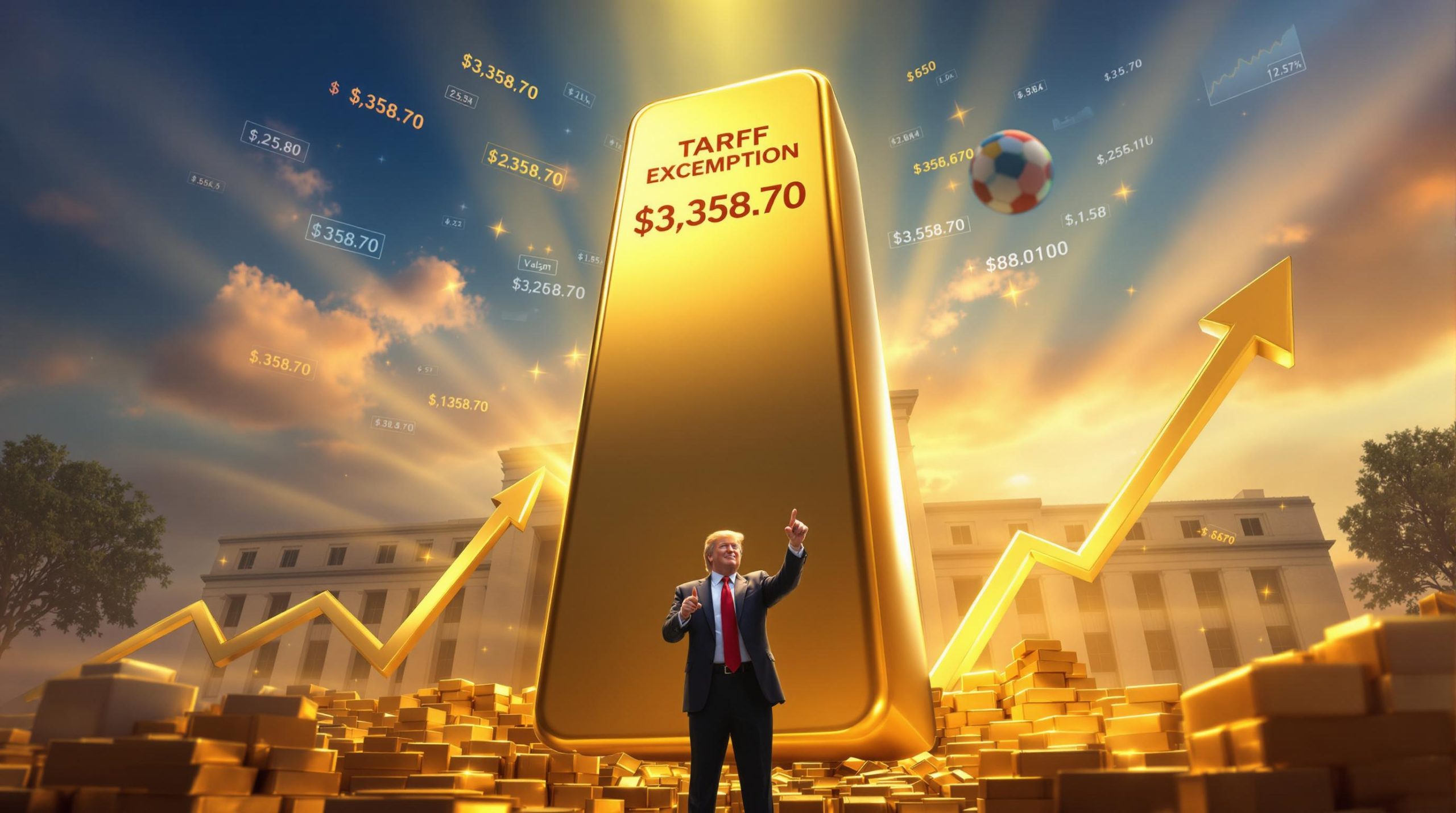What is the current import tax structure on LNG in India?
India currently maintains a 2.5% basic customs duty on liquefied natural gas (LNG) imports, with an additional 0.25% social welfare surcharge applied to these shipments. This creates a total tax burden of 2.75% on US LNG imports, which puts American suppliers at a competitive disadvantage compared to some other exporters. Notably, India has established bilateral free trade agreements with the United Arab Emirates and Australia that exempt LNG imports from these nations from any import taxes.
The differentiated tax treatment has created market distortions that impact sourcing decisions. For example, a typical $500 million LNG shipment from the United States incurs approximately $13.75 million in taxes, while identical shipments from the UAE or Australia enter India tax-free. This price differential has influenced purchasing patterns among Indian importers who are seeking to optimize costs.
Trade policy analysts point out that "scrapping the 2.75% import tax would immediately narrow pricing disparities between US LNG and tax-exempt suppliers like the UAE and Australia," creating a more level playing field in India's growing gas market. The social welfare surcharge component, though relatively small at 0.25%, contributes to infrastructure development and renewable energy initiatives across India.
The current tax structure has evolved considerably over the past decade. Prior to 2017, India imposed a 5% import duty on LNG, which was halved to 2.5% to encourage greater adoption of cleaner-burning natural gas in the country's energy mix. The UAE's tax exemption, implemented in 2018, led to approximately 30% volume growth in LNG imports from that country within the following two years, demonstrating the market sensitivity to even modest tax differentials.
How significant is India's LNG market?
India has established itself as the world's fourth-largest LNG importer, a position that underscores its growing importance in global commodities market insights and policy dynamics. In the first 11 months of fiscal year 2024-25, India imported 25.9 million tonnes of LNG worth $14.2 billion, representing approximately 8% of global LNG trade. Projections indicate that total imports will reach 27-28 million tonnes for the full fiscal year.
American suppliers have carved out a significant position in this market, currently accounting for 20-25% of India's total LNG imports. GAIL (India) Ltd alone imports 5.8 million tonnes annually from US suppliers under long-term contracts, with potential to increase to 7-8 million tonnes following any potential tax cut.
The International Energy Agency (IEA) projects a remarkable 60% increase in India's natural gas consumption between 2023 and 2030, noting that "India's LNG demand growth outpaces China's by approximately 3% annually." This explosive growth trajectory means that India's LNG imports are expected to double during this period, creating enormous opportunities for suppliers worldwide.
Currently, natural gas constitutes only about 6% of India's overall energy mix, but the government has established an ambitious target to increase this share to 15% by 2030. This transformation requires significant infrastructure development, with regasification capacity needing to double from current levels.
Regional demand patterns within India show considerable variation. Western states like Gujarat currently dominate LNG consumption, accounting for over 60% of imports due to their developed port infrastructure and regasification facilities. Eastern and southern regions are rapidly expanding their capacity, with Tamil Nadu and Odisha establishing new terminals to diversify the geographic distribution of LNG usage.
Japan's LNG import model has served as a benchmark for India's infrastructure expansion plans, particularly in terms of developing multiple entry points and creating a comprehensive national gas grid to ensure supply security and price stability across diverse regions.
What are the strategic motivations behind this potential tax cut?
The potential elimination of import taxes on US LNG represents a calculated strategic move by India to address its substantial $45.4 billion trade surplus with the United States. This imbalance has become a significant irritant for the Trump administration, which has consistently pushed trading partners to reduce deficits with the US. By removing the import tax, India could reduce this surplus by an estimated 5-7% through increased energy purchases alone.
This tax adjustment supports India's pledge to increase US energy purchases substantially—from $10 billion to potentially $25 billion—which would constitute approximately 50% of the ambitious $500 billion bilateral trade target established for 2030. A former US Trade Representative noted that "energy exports are Trump's lever to balance trade asymmetries," highlighting the geopolitical importance of this sector in bilateral relations.
The tax cut would immediately enhance the price competitiveness of American LNG in the Indian market. Without the 2.75% tax burden, US suppliers could potentially displace higher-cost alternatives and compete more effectively with tax-exempt suppliers from the UAE and Australia. This approach follows the model established in India's free trade agreement with the UAE, which has already proven successful in boosting bilateral energy trade.
Bilateral negotiations between India and the US have intensified in recent months, with energy cooperation featuring prominently in high-level discussions. The Modi-Trump 2024 talks specifically addressed energy as a cornerstone of the strategic partnership, representing a significant evolution from the broader frameworks discussed at the 2023 G20 summit.
The proposal also reflects India's strategic resource management initiatives to address potential trade tensions before they escalate. Unlike Canada and the European Union, which have adopted more confrontational stances toward US trade demands, India appears willing to make targeted concessions in areas of mutual benefit. Reports indicate that India is open to cutting tariffs on over half of US imports worth $23 billion, with energy products representing a substantial portion of this figure.
The structure of this potential agreement bears some resemblance to the 2019 US-China Phase One trade deal, which included specific energy purchase clauses, though India is approaching the matter through targeted tax adjustments rather than quantitative purchase commitments.
How does this fit into broader US-India energy cooperation?
This potential tax elimination represents just one facet of an expanding US-India energy relationship. State-run GAIL (India) Ltd has already established long-term deals to purchase 5.8 million tons of LNG annually from US companies, representing approximately $7 billion in investment commitments to the American energy sector since 2020.
GAIL's chairman has emphasized that "securing stakes in US LNG plants de-risks long-term supply chains," explaining the company's plans to revive plan to buy US LNG in liquefaction facilities or secure additional long-term supply agreements. This approach reflects a strategic shift from pure commodity purchases to integrated investments across the LNG value chain.
Beyond GAIL, multiple Indian energy companies—including Indian Oil Corporation and Bharat Petroleum Corporation—are actively engaged in negotiations with US counterparts for additional LNG sourcing agreements. India's oil ministry has explicitly directed these public sector undertakings to increase energy imports from the US where commercially viable, demonstrating a coordinated government approach to energy cooperation.
The technical structure of US-India LNG contracts differs significantly from traditional agreements in the sector. Most US export contracts utilize Henry Hub indexation rather than the oil-linked pricing common in contracts with Middle Eastern suppliers. This pricing mechanism provides Indian buyers with portfolio diversification benefits and potential hedging advantages in volatile energy markets.
Beyond LNG, India has significant potential to increase US imports of petrochemicals, ethane, propane, and butane. Indian PSUs have already committed approximately $2.5 billion to ethane and propane import deals in 2024, representing a diversification of the energy partnership beyond natural gas.
This approach mirrors Japan's Mitsubishi model for equity participation in US gas projects, which combines offtake agreements with direct investment in infrastructure. However, Indian companies are adapting this framework to incorporate greater flexibility in destination clauses and contract terms.
The liquefaction tariffs associated with US-India LNG agreements typically range from $2.25 to $3.50 per MMBtu, representing a significant component of the delivered cost. Tax elimination would effectively reduce the final delivered cost by approximately 2.75%, enhancing the economics of these arrangements.
How might global market dynamics influence this decision?
China's recent implementation of a 15% import tax on US LNG has created a significant market disruption that could benefit India. Industry analysts estimate that this Chinese policy could potentially redirect 10-12 million tonnes of US LNG to alternative markets annually, with India positioned as a natural destination given its growing demand and geographic proximity relative to European buyers.
Energy research firm Wood Mackenzie notes that "Asian LNG spot prices have fallen 30% since 2023, making US imports increasingly viable" for price-sensitive markets like India. This pricing environment creates an ideal backdrop for policy adjustments that further enhance competitiveness.
Shipping economics also factor prominently in the equation. Transportation costs from the US Gulf Coast to India average approximately $2.5 per MMBtu, compared to $1.8 per MMBtu from Australia. This differential means that tax elimination would not completely equalize delivered costs, but would significantly narrow the gap, especially for long-term contracts where shipping terms can be optimized.
India's growing economy requires substantial energy imports to sustain its development trajectory, and the potential tax cut aligns perfectly with the country's strategy to diversify its energy sources both geographically and by supplier. Unlike many advanced economies that are prioritizing domestic production or focusing exclusively on renewable alternatives, India recognizes that imported natural gas will play a critical transitional role in the role of clean energy transition in reshaping global trade.
The European Union's 2022 LNG diversification strategy following Russian sanctions provides a relevant parallel. When European nations rapidly shifted procurement away from Russian pipeline gas to LNG alternatives, they demonstrated how quickly import patterns can change in response to policy adjustments and geopolitical strategies in shaping trade and energy policy.
A comparative analysis of LNG import taxes across major Asian consumers reveals significant variation: Japan and South Korea impose no import duties on LNG, China now applies a 15% tax specifically to US supplies, and India's 2.75% rate falls somewhere in between. Eliminating this tax would align India's policy with the zero-tariff approach of other major Asian importers, potentially strengthening its negotiating position with suppliers.
What are the potential economic impacts of removing the LNG import tax?
The economic implications of eliminating the 2.75% import tax on US LNG would extend throughout India's industrial value chain. Lower energy costs would immediately benefit industrial and commercial consumers, particularly in energy-intensive sectors like fertilizer production, petrochemicals, and steel manufacturing. Analysis suggests that industrial gas costs could potentially drop by 1.5-2%, generating approximately $300 million in annual savings across these key sectors.
The Federation of Indian Chambers of Commerce and Industry (FICCI) has highlighted that "cheaper LNG accelerates India's shift from coal, potentially avoiding 50 million tonnes of CO₂ emissions by 2030" through fuel switching in industrial applications. This environmental dimension adds a significant externality benefit to the direct economic impacts.
Increased competitiveness of US LNG compared to other suppliers would likely drive greater market efficiencies and potentially lower prices through enhanced competition. With US suppliers able to compete on more equal footing with UAE and Australian exporters, the overall market would become more contestable, benefiting end consumers through improved terms and potentially lower margins.
The electricity generation sector, where natural gas currently contributes approximately 7% of India's power production, could see modest tariff reductions if gas becomes more cost-competitive. While the impact would be more limited than in direct industrial applications, it would contribute to overall economic competitiveness.
South Korea provides an instructive case study of the potential economic benefits. Following its 2015 LNG tax adjustment, the country experienced a 22% rise in manufacturing output in gas-intensive sectors over the subsequent three years, demonstrating the multiplier effect of energy cost reductions on industrial competitiveness.
Beyond direct price effects, the tax elimination would strengthen bilateral economic relations between India and the US, potentially facilitating additional investment and technology transfer. The increased trade volumes would create opportunities for complementary services, including financial, shipping, and insurance sectors.
Perhaps most significantly, the reduction in India's trade surplus with the US would address a significant potential source of friction, allowing for more constructive engagement on other economic issues. This diplomatic dimension provides an economic benefit that extends well beyond the direct fiscal impact of the tax change itself.
FAQs about India's LNG import policies
Why is India targeting LNG specifically for tax reduction?
LNG offers a unique combination of benefits for India's strategic objectives. It serves as a cleaner energy alternative to coal while simultaneously addressing trade imbalances with the United States. Natural gas produces approximately 50% less CO₂ than coal when burned for electricity, making it an essential bridge fuel in India's energy transition. Additionally, the US has emerged as a leading global LNG exporter with substantial capacity growth, creating natural complementarity with India's import needs.
How does this compare to India's agreements with other countries?
The proposed tax elimination follows a similar model to India's existing agreement with the UAE, where LNG imports enter tax-free under a comprehensive economic partnership agreement. The UAE agreement boosted LNG trade volume by approximately 40% within two years of implementation, demonstrating the effectiveness of tax elimination in stimulating trade flows. Australia also enjoys tax-exempt status for its LNG exports to India under a separate bilateral arrangement.
What is the timeline for implementation?
The proposal is currently under active consideration by India's finance and commerce ministries, with no officially announced implementation date. However, industry sources indicate that the government is considering abolishing the 2.5% import tax before the conclusion of the current fiscal year, which ends in March 2025. Any change would likely be implemented through a formal notification rather than waiting for the annual budget process.
Will this affect prices for Indian consumers?
The Directorate General of Foreign Trade (DGFT) notes that "consumer savings depend on pass-through mechanisms in Oil and Gas Authority of Supply and Trading (OGAST) agreements." In practice, the 2.75% tax reduction would likely be partially passed through to end-users, with the specific impact varying by sector and contractual arrangements. Industrial users with direct gas supply contracts would likely see more immediate benefits compared to residential consumers connected to city gas distribution networks.
How does this fit with India's climate goals?
India's 2070 net-zero roadmap explicitly identifies natural gas as a transition fuel that can help reduce emissions from coal while renewable capacity scales up. The National Green Hydrogen Mission further envisions natural gas as a feedstock for blue hydrogen production with carbon capture, creating additional decarbonization pathways. Increased LNG availability at competitive prices supports both near-term emissions reduction and longer-term transition strategies.
Strategic implications of India's potential LNG tax policy
India's consideration of eliminating import taxes on US LNG represents a calculated strategic move that balances trade relations with energy security imperatives. By potentially removing the 2.75% tax burden on American supplies, India is using a targeted fiscal adjustment to address the $45.4 billion trade surplus with the United States while simultaneously securing additional energy resources for its growing economy.
This pragmatic approach to international trade and energy security demonstrates India's evolving global posture. Rather than viewing energy imports purely as a transactional matter, policymakers are increasingly integrating them into a broader diplomatic and strategic framework. The potential tax elimination serves multiple objectives simultaneously: improving bilateral relations with the US, diversifying energy sources, supporting domestic industrial competitiveness, and advancing environmental goals.
The move could establish an important precedent for similar arrangements with other energy-exporting nations. If successful in stimulating increased trade flows and investment, this model might be replicated with emerging LNG exporters in East Africa or expanding producers in the Eastern Mediterranean, further diversifying India's supply options.
Projected foreign direct investment in Indian regasification terminals—estimated at $4 billion by 2026—underscores the growing importance of LNG in India's energy mix. These infrastructure investments represent a physical manifestation of the country's long-term commitment to natural gas, creating demand that will need to be satisfied through diversified import sources.
The Organization of the Petroleum Exporting Countries (OPEC) is closely monitoring India's supplier diversification efforts, recognizing that the world's third-largest oil importer is systematically reducing its dependence on traditional Middle Eastern suppliers. While OPEC remains a crucial source of crude oil, India's growing emphasis on natural gas—particularly from non-OPEC sources like the US—represents a strategic hedging strategy.
The interconnection between trade policy, energy security, and geopolitical considerations is particularly evident in this case. By adjusting a relatively modest tax, India is potentially reshaping trade flows worth billions of dollars while simultaneously addressing diplomatic priorities and domestic energy needs. This multidimensional approach reflects the increasing complexity of international energy markets, where commercial, strategic, and environmental factors are inextricably linked.
As global energy markets continue to evolve in response to both policy interventions and technological developments, India and US LNG import tax decisions provide a template for other developing economies seeking to balance multiple objectives within a coherent energy strategy. Furthermore, these developments highlight how Trump's trade policies and their impact on energy markets continue to reshape global commodity flows and bilateral relationships.
Ready to Spot the Next Major Mining Opportunity?
Stay ahead of the market with Discovery Alert's proprietary Discovery IQ model, which delivers instant notifications on significant ASX mineral discoveries, turning complex data into actionable insights. Explore why historic discoveries can generate substantial returns by visiting Discovery Alert's dedicated discoveries page and begin your 30-day free trial today.




